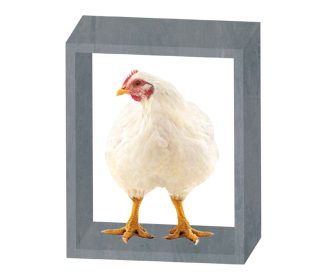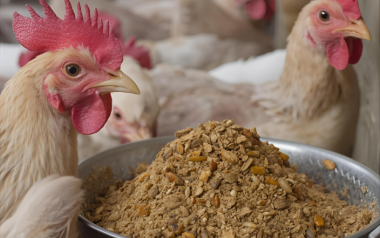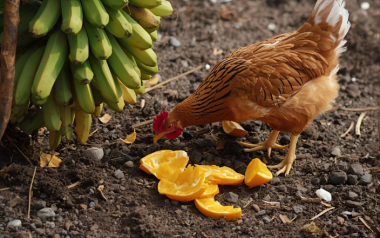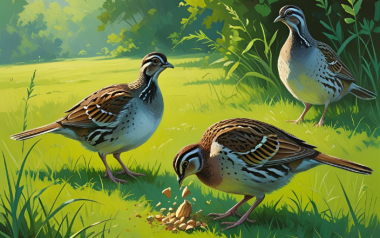The improvement in ingredient utilization, and the reduction in crop acres needed to feed poultry is truly remarkable – could I be bold enough to say, it has had a real impact on sustainability.
30 Mar 2020
Current challenges in Broiler and Broiler Breeder nutrition and management in the USA
Content available at: Español (Spanish) Português (Portuguese (Brazil))When I graduated from the University of Pretoria 40 years ago, the focus […]
Content available at:
Español (Spanish) Português (Portuguese (Brazil))
When I graduated from the University of Pretoria 40 years ago, the focus of the industry was to use scientific methods to improve the wellbeing, performance and profitability of animal production. As an industry we should be very proud of the exceptional advances we have made, far greater than I believe many of us would have thought possible.
The Era of Science on Performance Advancement:
SIGNIFICANT SCIENTIFIC ADVANCES:
- Nutrition
From a nutritional standpoint, the development of crystalline amino acids and feed grade vitamins have probably had the most significant nutritional effect on performance and cost of animal production.
- Vaccines
We cannot ignore the tremendous impact of vaccines, they have greatly reduced mortality and morbidity, birds with greatly reduced use medications.
- Genetics
Probably led to the greatest performance advancements. The improvement in health, welfare, efficiency of nutrient utilization (feed efficiency) and meat yield is remarkable.
- Housing
Advances in electronic controllers, cool cells, tunnel ventilation, feeding systems and nipple drinkers.
CRYSTALLINE AMINO ACIDS:
We have come to understand commercial amino acid nutrition, formulating with digestible amino acid values and using “ideal ratios”.
Excluding methionine, without which, it is very difficult to feed chickens, the use of L-Lysine and L-Threonine save approximately $11.50/ ton at today’s ingredient costs and reduces nitrogen emissions by 10 -15% 10%.
THE ERA OF BENCHMARKING:
Senior managers didn’t understand the “science” and practices of this new production system. So, a “simple” tabulated report that showed them how they were performing against other producers became their management tool – enter Benchmarking.
I believe this system greatly hurt the industry;
- It minimized the importance of university research.
- It took over a lot of the buyers’ responsibilities.
- It took away the responsibility of the Nutritionist to research the most efficient nutritional practices.
- It replaced traditional research.
- It “siloed” production divisions.
- It focused performance on calorie conversion and lowest cost. Calorie conversion has to be the most unreliable performance measurement.
- It shares production numbers and costs with industry suppliers and customers.
In my opinion, benchmarking has forced the industry into mediocrity rather than excellence.
The era of Government Regulation, Animal Rights Activist, Antibiotic Resistance, Environmental / Sustainability/ Global Warming Alarmists, Organic movement and Activist Marketing
The Governments, who “never let a crisis go to waste”, started imposing additional regulations on animal production. “Mad Cow Disease” was the perfect excuse, the citizens demanded action, so they acted.
Along comes all natural and antibiotic resistance; I believe the animal rights groups truly believed this would be the final nail in the meat coffin. However, there a lot of very smart scientists involved in this industry and it didn’t take them long to work out how to grow chickens without the use of growth promoting antibiotics. I believe the considerable advancement in vaccine technology, feed additives, and nutrition has made that possible.
The activists (animal rights and environmentalists) were emboldened during this period and were able to lobby the media and legislators to increase regulation on animal production.
THE ACTIVIST MARKETING EFFECT;
Food service companies – restaurants and grocery stores have been targeted by these groups to support activist led practices. Those companies that do not willingly toe the line are mercilessly shamed and bullied in the media.
That brings us to today and the Challenges in Poultry Nutrition.
PULLET AND BREEDERS:
The Primary Breeders, as mentioned have made tremendous progress in performance. This has led to some challenges with chick production with these high-performance birds.
Due to high labor costs in the United States, we have chosen to;
- Not grade pullets and
- Co-mingle our roosters.
We have also followed Benchmarking numbers, rather than best scientific practices. These actions have made it more difficult to manage these birds.
Nutrition strategies I to address fertility in Breeders;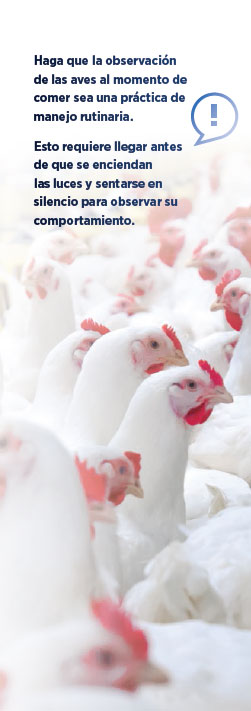
- High total Sulphur amino acid levels, low lysine and balance the other amino acids and minerals for skeletal development.
- I focus on feed access and distribution; from my work I have seen that we put too much pressure on feeders. Feeders are generally specified for 15 birds/ pan. This is generally sufficient up until 12 weeks of age, after that not. By 16 weeks only +/-12 birds can fit around a feeder, this mean that 25% of the birds have to compete for feeder space. This affects daily intake of nutrients.Intake has a far larger impact on “Daily Intake of Nutrients” than formulation.
- Pullets that are amino acid deficient will pull and eat feathers.
- In an effort to improve feathering, many are tempted to increase the amino acid density (CP), this may, in fact, exacerbate the situation. The additional amino acids are partitioned to breast muscle, which results in an over-fleshed breeder.
Considering that birds have gone through their final molt by 25 weeks, the feathers you have at that age are what you will have in the hen house. Most of the feather loss during lay is mechanical damage. Compare a laying vs. a non-laying hen at 60 weeks:
- At the feeder (tight spacing causes them to push and shove),
- During mating, excessive numbers of males make this worse.
- From nest
Check feeder space, breeders are bigger and wider than they were 20 years ago. In a “standard” 10,000 bird house, just a ¼ wider bird translates into 210 linear feet of feeder space.
Loss in male condition through female stealing or insufficient feeder space will cause testes resorption Loss in male condition is probably the biggest cause of poor fertility.
Weighing eggs in an excellent tool in managing feed withdrawal during lay.
Daily feeding of Pullets. We will be moving to daily feeding over the next few years.
Make watching your birds eat regular management practice. Get there before the lights come on and sit quietly and watch their behavior.
BREEDERS:
- Egg shells
Ensure that Breeders are not heat stressed, panting causes respiratory alkalosis, which will affect blood calcium levels, which in turn can lead to calcium and thin shelled eggs. This situation is particularly important during the Spring when we have short periods of hot and cold temperatures. Feeding a Breeder more than 4.8 grams of Calcium a day is going to improve eggshell quality.Ensure eggs are clean, collected frequently, placed in sanitized hatch trays and refrigerated correctly and then stored in a cool, sanitary environment at the hatchery.
- Temperature control in hatchery;
Metabolic heat – use thermometers and Infra-Red cameras to evaluate and correct uneven temperatures in the setters and hatchers. Ensure chicks are not heat stressed during holding and or transportation to the farm.
BROODING:
Make sure the environment is a close to perfect as you can make it.
- Focus on brooding temperatures, high temperatures will cause panting and affect the tight junctions in the intestines. If you see pasty vents, the birds have been heat-stressed and will be a challenge to manage.
- Check gas levels; <25ppm of ammonia, <2,500 ppm of carbon dioxide levels.
- Ensure, plenty of fresh, cool, easily available water and feed.
- Check 24-hour cop-fill.
TO CONTINUE READING REGISTER IT IS COMPLETELY FREE
Access to articles in PDF
Keep up to date with our newsletters
Receive the magazine for free in digital version
REGISTRATION
ACCESS
YOUR ACCOUNT
LOGIN
Lost your password?







